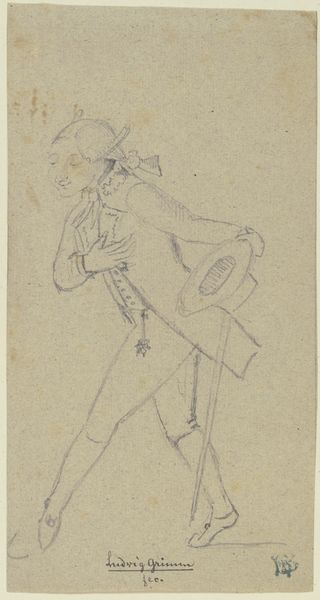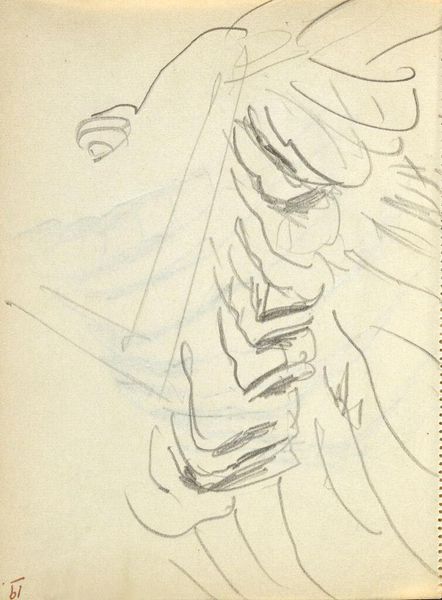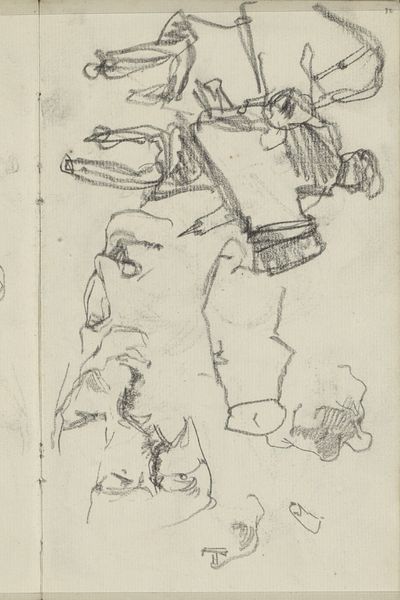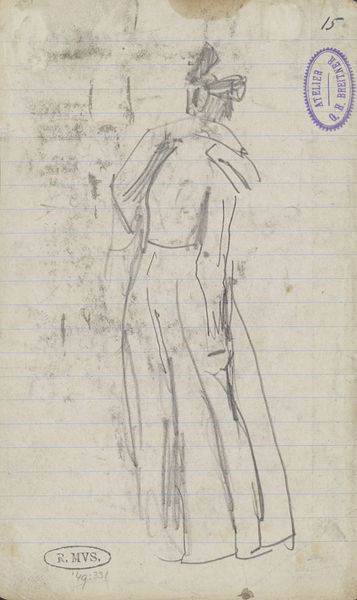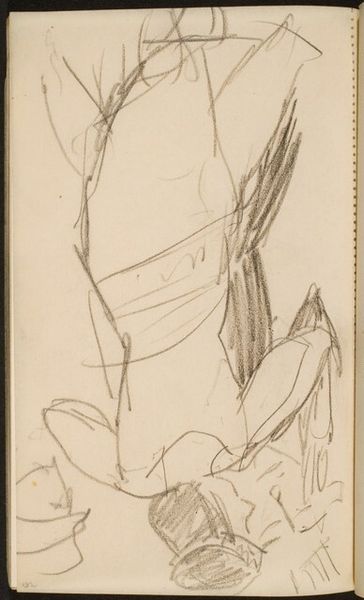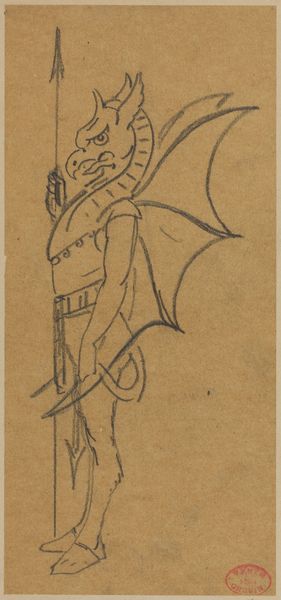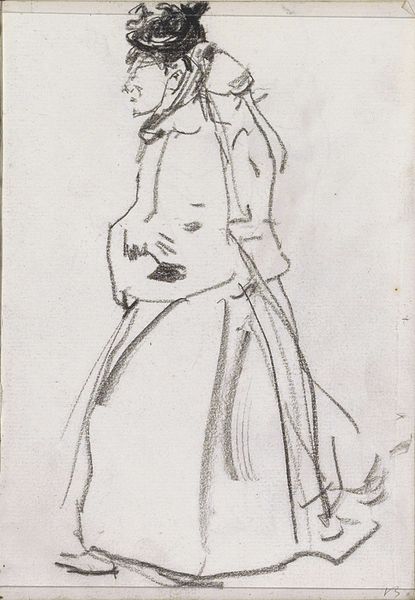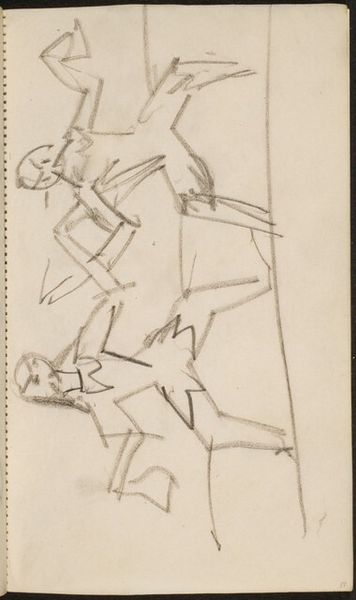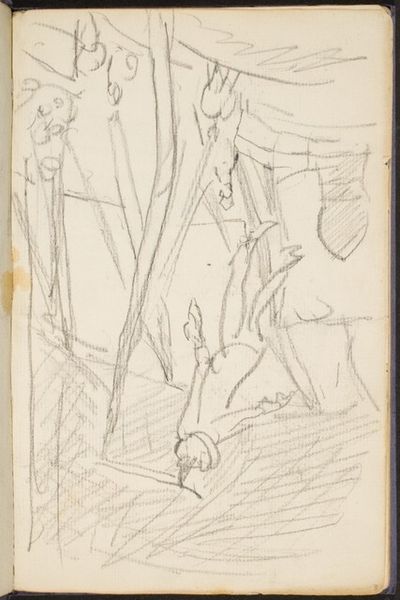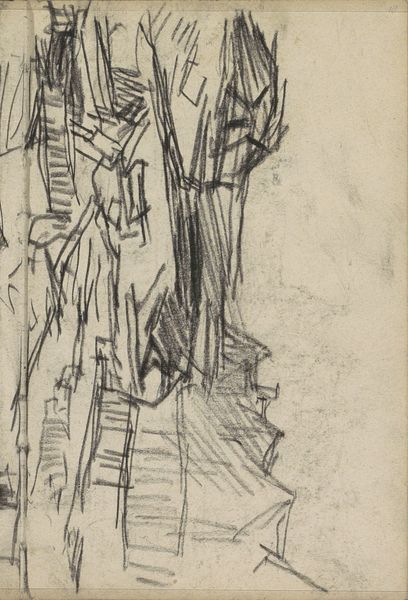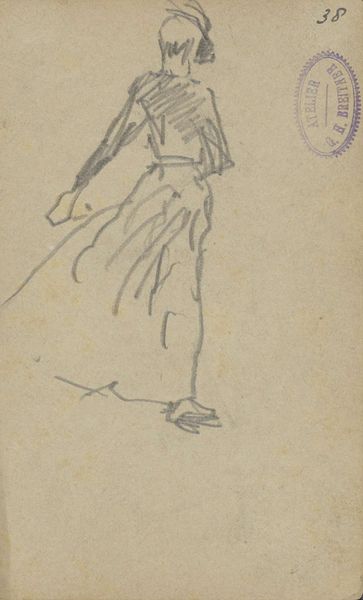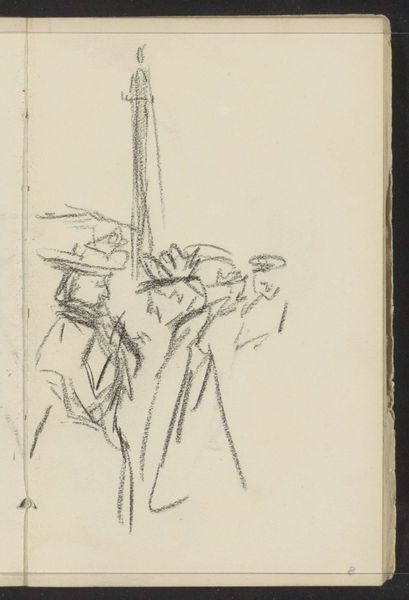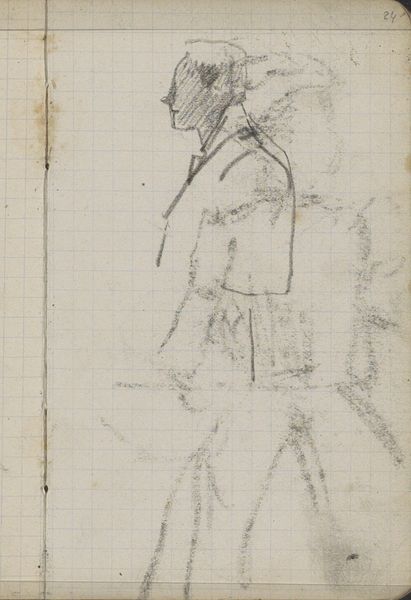
drawing
#
portrait
#
drawing
#
caricature
Copyright: Public Domain: Artvee
Editor: Here we have a drawing titled "Caricature of a soldier holding a decoration," created in 1881 by Henri de Toulouse-Lautrec. It's a quick sketch, full of exaggerated lines. What strikes me is the economy of line used to portray such a… well, grotesque figure. What do you make of this piece? Curator: The power of this caricature resides precisely in that economy, its reliance on line. Notice how Toulouse-Lautrec doesn't offer shading or tonal variation. Instead, he depends solely on the suggestive contour to articulate form. The distorted facial features—the pronounced nose, the jutting chin—are rendered with unwavering, confident strokes. Editor: It feels almost brutally honest, despite being so…simplified. Curator: Precisely. The apparent simplicity belies a profound understanding of form and a controlled execution. It isn't merely about replicating likeness; it's about conveying essence. Observe the stark contrasts of lines defining the soldier's stance, for example; the rigid angles opposed against the fluidity of the medal chain. This juxtaposition hints at the rigidity the figure embodies. Do you think he has rendered an objectification, turning a man into an idea, devoid of the original person’s characteristics? Editor: Yes! And the decoration he's holding seems almost like a cruel joke, doesn't it? The roughness accentuates his unworthiness, the value contrasts are heightened to expose such. Curator: Indeed. It underscores the potential emptiness of such honours. Lautrec's caricature challenges us to examine the relationship between outward appearances and inner worth, solely through pictorial mechanics, challenging societal notions. Editor: I see that now, thank you. It's a powerful piece that does more with less. I’ll definitely remember to focus more on artistic execution, going forward. Curator: I'm glad this new reading has opened new doors for further observation and reflection on form and significance.
Comments
No comments
Be the first to comment and join the conversation on the ultimate creative platform.
